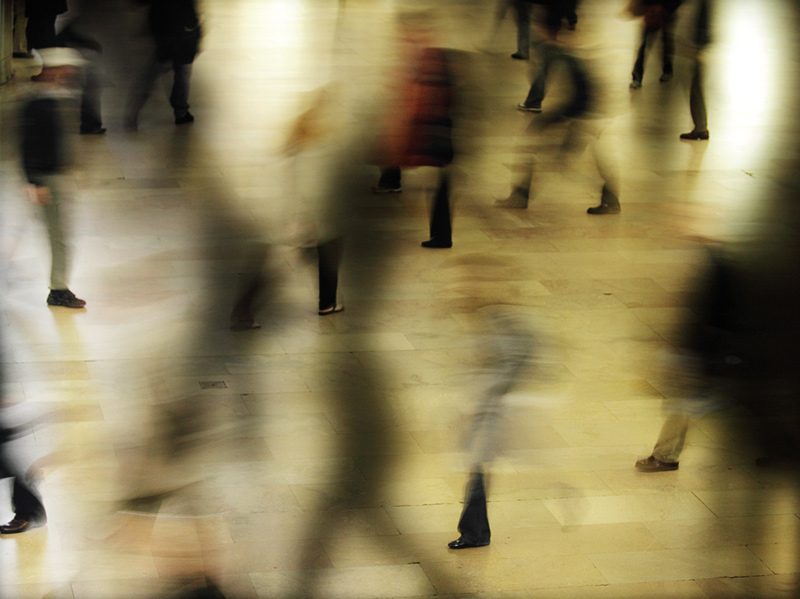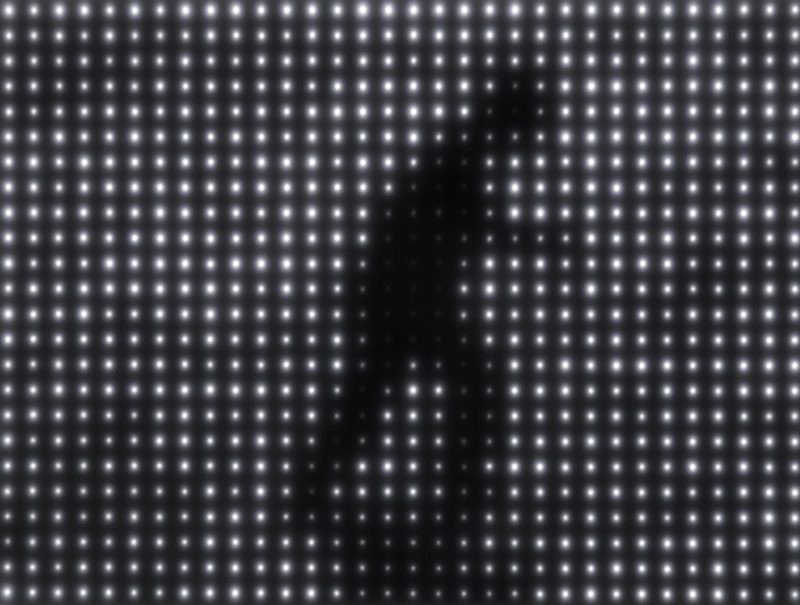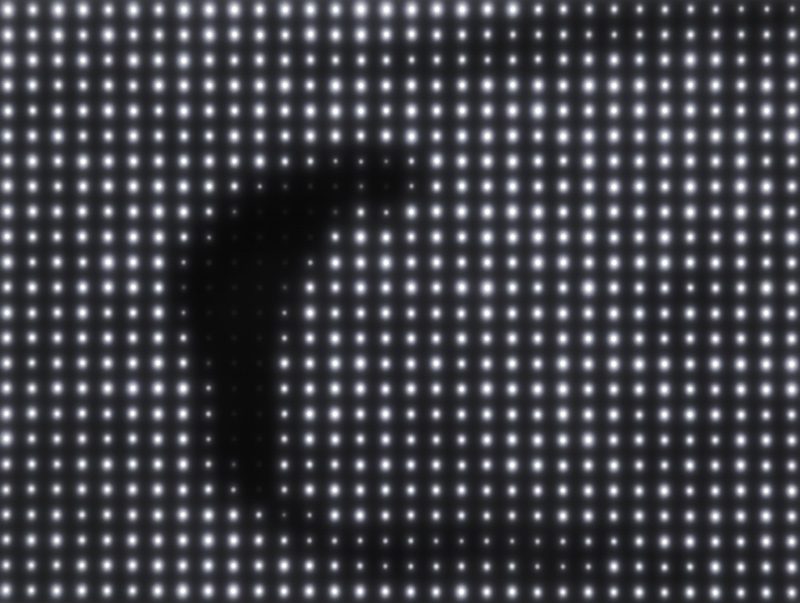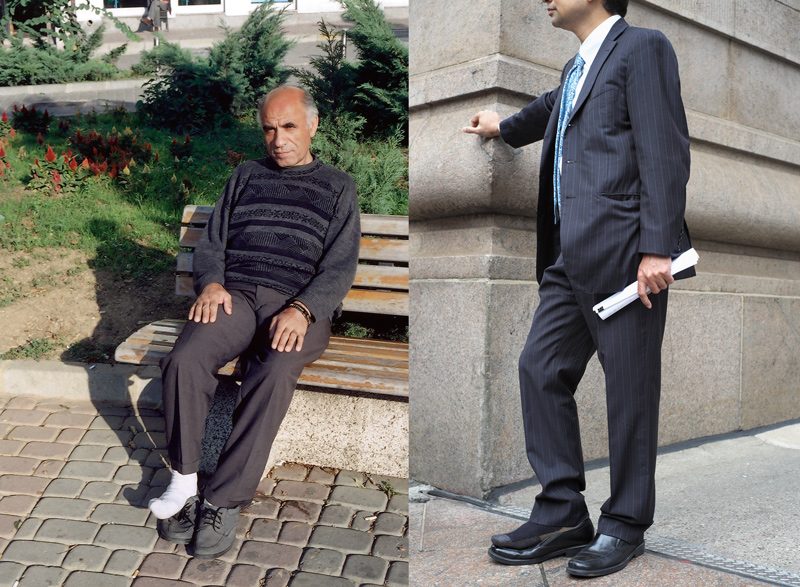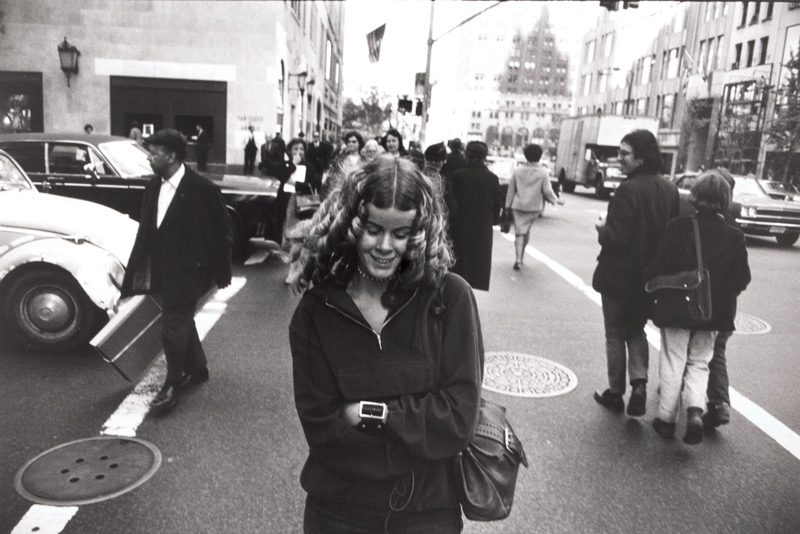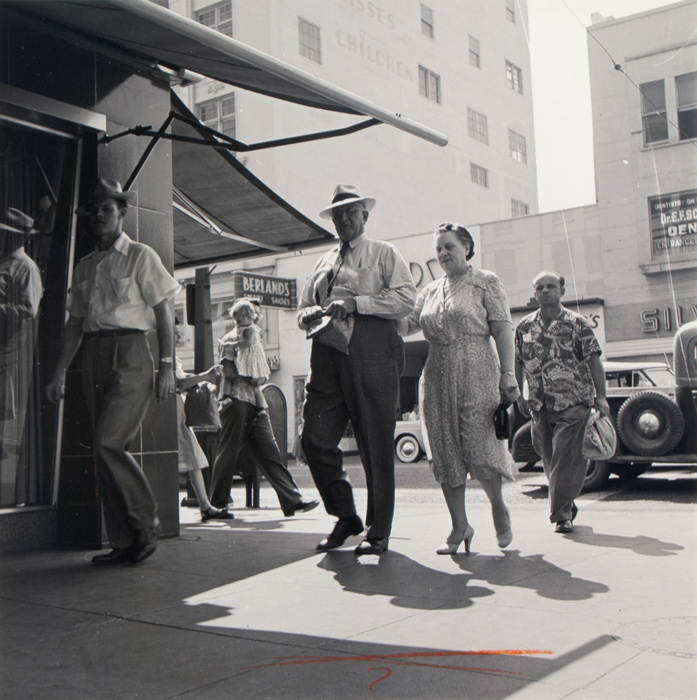Karen Irvine, curator and museum associate director at the Museum of Contemporary Photography in Chicago, recounted that it was after seeing Sohei Nishino’s work in Korea in 2010 and reading Rebecca Solnit that she had the idea for the Of Walking exhibition.1 Nishino is one of eight international contemporary artists whose works were in the show. The photographs, videos, electronic panels, and objects in Of Walking elicit the concept of a theoretical space that enriches the artworks on display beyond their formal attributes. Edward Soja calls this space – which is neither uniquely central nor only marginal, but both – Thirdspace.2
It is in Solnit’s book Wanderlust: A History of Walking – which, upon its publication in 2000 created a significant and expansive interest for walking – that the dialectic premise for Irvine’s project may be found. Solnit’s book is, indeed, an unavoidable reference in any serious discussion of the subject. Her study examines peripatetic history from different perspectives and exposes the agency of the elementary act of walking as a cogent operation of social and cultural development. She discusses artists whose work is linked with photography and have all been active in the second half of the twentieth century. Vito Acconci, Sophie Calle, and Hamish Fulton are some of these artists, also known for the conceptual agency in their work. As Solnit observes, they are part of a “new realm of walking opened up in the 1960s, walking as art.”3 Meanwhile, the link between photography and walking predates the induction of ambulation into the art world.
The word “walking” evokes an action. This action has, for the better part of the last fifty years, been an acknowledged medium in art with a rooted connection with photography. It is a connection enriched by diverse dialectic, material, and practical components. Individually, walking and photography propose respective formal and mental possibilities of synergy with space that are creative, practical, and often both. When we examine these two media in combination, we can develop a distinctive mindset for interpreting the works in Of Walking.
The seminal role of Solnit’s book in the genesis of this show is condensed in a passage from Wanderlust, which Irvine chose as the introduction for the exhibition’s didactic text. The quotation also echoes an inclusiveness that is symptomatic of a Thirdspace: “It is movement as well as the sights going by that seems to make things happen in the mind, and this is what makes walking ambiguous and endlessly fertile: it is both means and end, travel and destination.”4
Walking and photography are closely linked in street photography, a genre that – along with different types of documentary photographic approaches – is central in the walkingandphotography binary. As Irvine observed, “You can look and just about the whole history of photography has been about walking.”5 However, the contemporary artists whom she chose for this exhibition present works in which ambulation is present as a significant methodological or conceptual element rather than as a historical trope. In other words, the hybrid selection of works reflects a focus on images and projects that may be imagined as situated along the edges of a classic reading of the walkingandphotography association rather than at the centre. Simultaneously, they are never completely separated from the historical core of the walkingandphotography paradigm. Although looking at these works from such a perspective further reveals the richness of the walkingandphotography combination beyond its denotative components, it also brings to light the theoretical proposition of Thirdspace as a cogent tool of analysis.
The American geographer and urban planner Edward Soja conceives Thirdspace as a way of engaging spatial analysis beyond the usual binary of real versus imagined places. It is a hybrid point of juncture in which place and space are “open and inclusive rather than bound by authoritative protocols.”6 The notions of Firstspace and Secondspace are important in understanding this theory: the former is an “everyday reality,” such as a place that is home, which collapses into the latter, a conceived space or the home as “imagined.” An example could be a photograph of a city. As Firstspace, it is a space within its representation of a place within a photograph; as Secondspace, the same place is imagined, outside of its traditional representations by society.7 Soja’s Thirdspace is distinct from Firstspace and Secondspace because it encompasses them; as he explains, “Everything comes together in Thirdspace: subjectivity and objectivity, the abstract and the concrete, the real and the imagined, the knowable and the unimaginable, the repetitive and the differential, structure and agency, mind and body, consciousness and unconsciousness, the disciplined and the transdisciplinary, everyday life and unending history.”8
Of Walking featured works by six individual artists and one duo. The curator also took the opportunity to show a separate sampling of photographs from the museum’s own collection. These street and documentary pictures by photographers established in the canon of photographic history, such as Robert Frank, Dorothea Lange, and Garry Winogrand, were not part of the exhibition but presented as an addendum. Showing these images in this periphery inverts their traditional position as central in the photographyandwalking combination by placing them in the margin of the actual exhibition.
The two artists whose work was displayed in the main gallery propose radically different dialectics and applications of walkingandart creation: forms contrasted with ideas. The Japanese artist Sohei Nishino (b. 1982), as mentioned above, was an early inspiration for the show. Sohei walks in cities such as Tokyo, London, and Kyoto, to name only the places in the photographs on display, taking thousands of pictures that become the raw material from which he creates large photographic works called Diorama Maps (2003–ongoing). His images are “constructed” from memory and single smallformat photographs that show various perspectives and mirror his impressionistic involvement with these places. His composite maps articulate abstractlike representations. While connoting the street photographer’s meander through the city, Sohei’s maps also introduce another way of looking at the production of social space. His project integrates both Firstspace [Tokyo, for example] and Secondspace perspectives [his composite photographic representation of Tokyo] while at the same time “opening up the scope and complexity of the geographical or spatial imagination”9 as Thirdspace.
Sharing this gallery with Sohei’s three large blackandwhite photographs was a selection of ten pieces that included images, photographs, texts, images with text, and paintings by the British photographer and land artist Hamish Fulton (b. 1946). Although a very different motivation from Sohei’s inspires his walks, Fulton is the quintessential walking artist. For the pioneer in the art form, the actual walk is the artwork. Some of his walks are journeys that last several weeks and cover hundreds of kilometres. As important as his meandering is that he not disturb the landscape, from which the only material traces that he occasionally brings back are souvenir photographs. He often combines these with descriptive captions to create documents that signify, as he states, “a passive protest against urban societies that alienate people from the world of nature.”10 Here, Thirdspace emerges as an exploration in which the city is relegated to the margin by Fulton’s walks, which explore new dimensions of spatiality. This perspective resonates when we see examples of his documentation in the same room as Sohei’s striking, stylish conceptual city maps.
Liene Bosquê (b. 1980) and Nicole Seisler (b. 1982), of Brazilian and American/Dutch origin, respectively, work together with yet another conceptual mindset. The duo organize walks in cities with participants who are asked to create imprints from the urban landscape in wet porcelain blocks. The resulting objects, each with its unique impressions, denote the indexical nature of analogue photography and are material traces of each participant’s distinctive psychological contact with the places through which they have walked. Bosquê and Seisler’s enterprise presents a characteristic of Thirdspace in signifying “all three spatialities – perceived, conceived, and lived – with no one inherently privileged a priori.”11 Their work was presented with a selection of photographs related to walking chosen by the artists from a corpus of images in the museum’s permanent collection.
Paulien Oltheten (b. 1982) is a Dutch artist whose images are infused with a distinctive relational quality. Her photographs and videos echo the passing of time and chance encounters, and document people walking or occupying public spaces. Her project in the exhibition is from a work in progress in which photographs such as Proximics (ants) (2013) affirm her acute and patient eye. In another section of the work is Oltheten’s video of a man engaged in walking weirdly on the sidewalk in downtown New York. She had noticed the man by chance and was able to communicate with him by letter; she asked him to reenact his distinctive walk for the video. The peculiar component in this scene evokes Bruce Nauman’s radical experimentation with walking in his late1960s video works.12 This historical resonance is supplemented with a Thirdspace that is revealed by Oltheten and the walker’s transformation of hegemonic downtown space into a space of unconventional artistic experimentation.
The Singaporean artist Simryn Gill (b. 1959), who lives in Australia, walked around Marrickville, a suburban neighbourhood near Sydney, for a month, taking daily snapshots of mundane objects and scenes. The Thirdspace notion of “[rethinking] marginality in her personal act of displacement”13 resounds in Gill’s impressive grouping of photographs showing highly personal views of the area. Every day, she went out to walk with a new roll from a film batch with an expiry date of May 2006. The scenography for May 2006 shows over eight hundred gelatinesilver prints as thirty vertical groups of photos, each column equalling one day’s walk and one roll of film. As Irvine noted, during these walks Gill remained open to chance and “the process of discovery that happens when you’re walking through a place, making place come alive through ambulation.”14
In a passageway, leading from the gallery’s main floor to proceed to the upper floor were a series of pigment prints from the project Thrice Upon a Time (2012) by the Australian photographer Odette England (b. 1975). Twenty years after her parents lost their dairy farm due to a sharp drop in the price of milk, England returned to the home of her youth to photograph places with mnemonic meaning selected from childhood photographs of her taken by her parents. In 2010, England again returned to the farm with her parents and asked them to tread the old family grounds with large colour negatives of the photographs she had taken tied under their feet. The soiled, scrapped, and torn images on display emerge as poetic shards of personal loss. As Thirdspace, in England’s photographs the home is disrupted from binary classification and becomes a place where it is possible to reconceptualize the very idea of space and memory.
Of Walking concluded with a pair of electronic tableaus by the American artist Jim Campbell (b. 1956). Composed of white light-emitting diodes, each tableau shows the silhouette of a physically impaired person in constant motion. Campbell’s postphotographic work is inspired by the history of the photographic medium, notably the stopmotion photographs developed during the nineteenth century by photographer and scientist Eadweard Muybridge. Motion and Rest (2002) depicts a solitary disabled figure appearing to engage the electronic space that the artist created with hundreds of tiny LED lights. Walking, memory, and science converge as a Thirdspace in which there is no geographical junction but a technological spatiality, as a space of difference and of resistance to dominant ambulatory and photographic practices.
The exhibition at the Museum of Contemporary Photography was a space for these artists to communicate, walk, create, and observe, and for the public to understand some of the significant links between walking and photography. Of Walking offered a critical space of interplay among art, peripatetic mobility, memory, social politics, chance, and photographic history. Admittedly, Soja’s Thirdspace is a complicated concept, and its application here barely begins to scratch the surface of its rich analytical possibilities. In this exhibition, elements came together and walking and art were combined to rethink real and imagined places, recombinational strategies, and the endless possibilities associated with walking. As Thirdspace, the works revealed how the everyday practices of walking and photography can be combined as active agents to study and imagine, synchronously, from the margins and the core, the spaces around us.
1 Karen Irvine and I met at the Museum of Contemporary Photography on December 18, 2013, to discuss the exhibition; I thank her for generously making time for our conversation.
2 Edward Soja designates Thirdspace as a proper name; although different scholars use other forms of spelling I will conform to his orthography.
3 Rebecca Solnit, Wanderlust: A History of Walking (New York: Penguin Books, 2000), 267.
4 Ibid., 6.
5 Interview with Karen Irvine.
6 Edward Soja, Thirdspace: Journeys to Los Angeles and Other Real-and-Imagined Places (Malden: Blackwell, 1996), 162.
7 Soja’s Thirdspace is more detailed and inclusive than other proposals on the theme, such as those introduced by postcolonial and poststructuralist theorist Homi K. Bhabha, Edward Said, and author and social and feminist activist bell hooks.
8 Soja, Thirdspace, 56–57.
9 Edward Soja, Postmetropolis (Malden: Blackwell, 2000), 11.
10 “Hamish Fulton,” British Council Visual Arts, http://collection.britishcouncil.org/collection/artist/5/18781, accessed 17 May 2014.
11 Soja, Thirdspace, 68.
12 Nauman’s 1968 video Slow Angle Walk (Becket Walk) is an example.
13 Soja, Thirdspace, 135.
14 Interview with Karen Irvine.
Philippe Guillaume is a peripatetic artist, photographer, and author based in Montreal, Canada. He holds a master’s degree in photography and art history from Concordia University’s Special Individualized Program. He is a member of the Canadian Photography History Research Group based in the Department of Art History at Concordia University.


